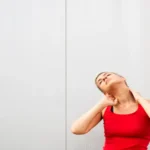Manholes are a critical component of urban infrastructure, serving as access points to underground utility systems such as sewer lines, storm water drains, and telecommunications networks. These small, usually round or rectangular, holes on the streets or sidewalks allow maintenance crews to access and inspect these systems, as well as perform necessary repairs and upgrades. In this article, we will explore the various aspects of manholes, including their design, construction, maintenance, and challenges faced by cities in managing their manhole systems.
Design and Construction of Manholes
Manholes are typically constructed with the purpose of providing easy and safe access to underground utility systems. The design and construction of manholes involve several important considerations, including location, size, shape, materials, and safety features.
Location: Manholes are strategically located along utility lines to allow for efficient access and maintenance. They are typically positioned at regular intervals along sewer lines or storm water drains, with consideration given to local regulations and engineering requirements. Manholes are also placed at key junctions where utility lines intersect, allowing for branching or merging of pipelines.
Size and Shape: Manholes come in various sizes and shapes, depending on the type of utility they provide access to and the anticipated maintenance activities. They can range from small, circular manholes for telecommunications or gas lines, to larger, rectangular manholes for sewer lines or storm water drains. The size and shape of manholes are designed to accommodate equipment and personnel needed for maintenance tasks.
Materials: Manholes are constructed using a variety of materials, including concrete, brick, or precast polymer. Concrete manholes are common due to their durability and strength, and are typically reinforced with steel to withstand heavy loads and prevent collapse. Brick manholes are less common nowadays, but are still used in some older cities. Precast polymer manholes are gaining popularity due to their lightweight nature and resistance to corrosion and degradation.
Safety Features: Manholes are equipped with various safety features to protect workers who enter them. These can include ladders or steps for easy entry and exit, handrails for stability, and safety covers or grates to prevent accidental falls or debris from entering the manhole. Ventilation systems may also be installed to ensure proper air circulation and prevent the buildup of hazardous gases.
Maintenance of Manholes
Proper maintenance of manholes is crucial to ensure their functionality and longevity. Regular inspections and maintenance activities are necessary to identify and address issues before they become major problems. Some key aspects of manhole maintenance include:
Inspection: Manholes should be routinely inspected for signs of damage, degradation, or blockages. Inspections may involve visual assessments, measurements, and testing of structural integrity, as well as checking for proper ventilation and safety features. Inspections may be performed by city or utility personnel, and records should be kept to track maintenance activities.
Cleaning: Manholes may accumulate debris, sediment, or other materials over time, which can impede their function and create safety hazards. Regular cleaning, including removal of debris, sediment, or obstructions, is necessary to maintain clear access points and prevent blockages in utility systems.
Repairs and Upgrades: If any damage or deterioration is detected during inspections, repairs or upgrades may be necessary. This may include repairing cracks, replacing broken covers or grates, reinforcing structural elements, or upgrading safety features. Repairs should be carried out promptly to prevent further damage or potential safety hazards.
Emergency Response: Manholes may require emergency response in case of accidents, blockages, or other incidents. Cities and utility companies should have emergency response plans in place, including protocols for addressing accidents or incidents involving manholes, and coordinating with emergency services and other relevant stakeholders.
Challenges in Managing Manholes
Managing manholes can pose several challenges for cities and utility companies. Some common challenges include:
Aging Infrastructure: Many cities have aging manhole systems that may require extensive repairs or upgrades. Older manholes made of brick or concrete may deteriorate over time due to wear and tear, exposure to harsh environmental conditions, or corrosion from chemicals in sewer or storm water systems. Upgrading or replacing aging manholes can be expensive and require careful planning and coordination.
Access and Safety: Manholes are accessed by workers who may face safety hazards such as confined spaces, exposure to toxic gases, or the risk of falls. Ensuring worker safety during manhole inspections and maintenance is crucial. Proper training, equipment, and protocols should be in place to mitigate risks and comply with safety regulations. Additionally, manholes located in busy urban areas may require traffic control measures to ensure worker safety and prevent disruption to pedestrians and vehicles.
Coordination with Stakeholders: Managing manholes often involves coordination with various stakeholders, including city departments, utility companies, contractors, and emergency services. Coordination can be challenging due to the need to schedule inspections and maintenance activities, obtain permits, manage budgets, and ensure compliance with regulations. Effective communication and coordination among stakeholders are essential for smooth and efficient manhole management.
Environmental Concerns: Manholes can pose environmental concerns if they are not properly maintained or if they contribute to pollution. For example, manholes connected to sewer lines can release untreated sewage into the environment in case of blockages or leaks. Storm water manholes can contribute to pollution if they are not properly managed, allowing debris or contaminants to enter storm water systems. Proper maintenance, cleaning, and pollution prevention measures are necessary to mitigate environmental impacts.
Cost and Budgeting: Manhole management requires budgeting for inspections, maintenance, repairs, and upgrades. Cities and utility companies need to allocate funds for manhole management, which can be challenging due to competing priorities and limited budgets. Proper financial planning and budgeting are crucial to ensure adequate resources are allocated for manhole management to prevent deferred maintenance or neglect.
Conclusion
Manhole play a critical role in urban infrastructure by providing access to underground utility systems for maintenance and repairs. Proper design, construction, and maintenance of manholes are essential to ensure their functionality, safety, and longevity. Cities and utility companies face challenges in managing manholes, including aging infrastructure, access and safety concerns, coordination with stakeholders, environmental concerns, and budgeting. However, with proper planning, coordination, and maintenance, manholes can continue to serve as vital components of urban infrastructure, ensuring the efficient and reliable functioning of utility systems for years to come.











